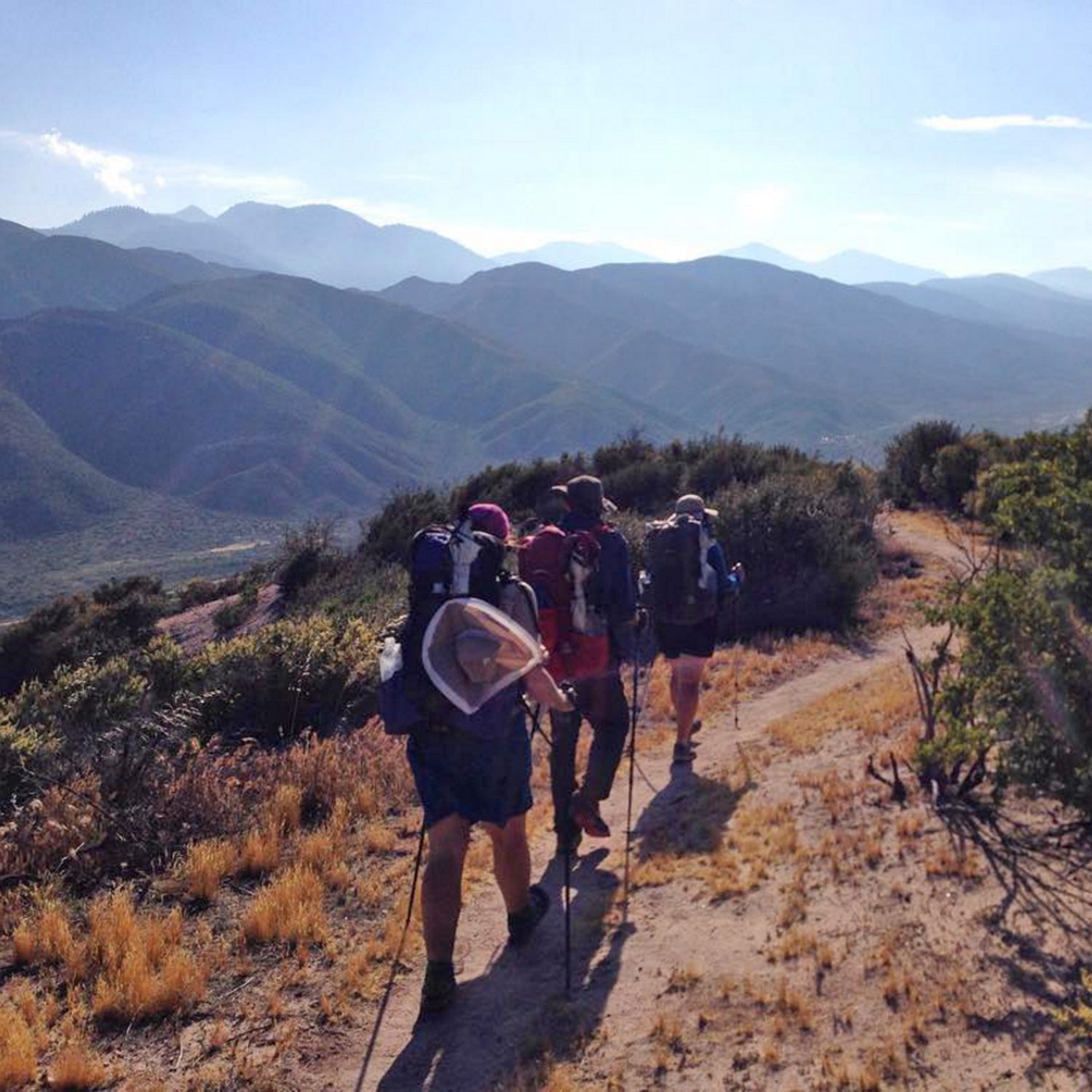You can’t talk about the Pacific Crest Trail without mentioning the crowds. For the first 55 years on record, starting in 1952, the most thru-hikers to attempt the full trail, starting at the Mexican border, where I started, was 300, in 2006. But in the past decade—and particularly the last four years, since the release of Cheryl Strayed's Wild—t��� numbers have spiked.��
Hiking the PCT: 2016
 I set out in April on a six-month trek north along the 2,650-mile trail. I’ll be filing dispatches every two weeks. Follow my journey here.
I set out in April on a six-month trek north along the 2,650-mile trail. I’ll be filing dispatches every two weeks. Follow my journey here.So far, in 2016, more than 4,000 long-distance hiking permits have been issued. Not all of them are for hikers who plan to walk fully from Mexico-Canada. A few hundred of the permits will be for section-hikers taking on a 500-mile-plus trek. A few hundred more are for hikers heading out at other times of the calendar year. Still, if you look at the on the Pacific Crest Trail Association’s (PCTA) website, you’ll see that throughout the eight-week-ish window (approximately mid-March to mid-May) the full quota of 50 permits per day are taken. So there’s 3,000 people attempting the Northbound thru-hike. Furthermore, a few hundred hikers will be heading Southbound between July and November. (The tougher, so-called “SoBo” itinerary is becoming more and more popular in the face of the hordes hiking north.)
While the PCTA has issued permits for many years, the current permit system—with its 50 permits per day cap—was only introduced in 2015. As a direct response to the spike in numbers, the main aim of the quota system is to spread the number of hikers out and mitigate wear on the trail and environmental damage. This is especially important in the desert environments that dominate the first 700 miles.��
The main aim of the quota system is to spread the number of hikers out and mitigate wear on the trail and environmental damage.
“Deserts are fragile ecosystems. They’re more susceptible to damage and when damage occurs, it lasts longer,” says U.S. Forest Service volunteer Jules Fijolek. “If damage became significant, we’d think about putting in shelters like on the Appalachian Trail. We’re actually trying to avoid that, but the idea is not off the table.”
In addition to the environmental impact—degraded vegetation, establishment of new camp spots, human waste, etc—t���re are also real financial costs to essential services. More hikers means more helicopter evacuations and searches. Fijolek says there had already been 20 rescues by April 26. All were in the first 50 miles.��
It’s tough to put a number on exactly how many hikers use the trail during any given period. , the maximum number of allowable hikers of 50 per day headed out from the Mexican border during the high season in 2015, and 2,800 long-distance permits were issued that year. Of those, approximately 1,200 made it to Canada, Fijolek says.
Numbers for this year aren’t available yet—“We’re still in a data collection phase,” says Fijolek—but judging by logbooks and my own observations, we’re close to the 50-hiker-per-day capacity again.
So far as I can tell, the desired dispersal is working. But it may not hold up as more and more thru-hikers pile on and the only thing delineating when a permitted hiker may hit the trail is the honor system. For a long time, the hiker community, trail angels, and the PCTA were reluctant to adopt a formalized sign-up for what is essentially a wild experience. Stretching back to at least 2004, according to trail angel Donna Saufley, the trail community has been discussing increased numbers, pressures, bottlenecks, and community-led management. But sheer numbers eventually forced the adoption of the current top-down administration of permits.
No one wants to envision a day when hikers are denied the opportunity to walk. The PCT is a crucible of challenge, change, reconnection, and reinvention. It’s an endeavor open to everyone: it’s call has never come with caveat or exemptions. So even the smallest of restrictions on numbers would be a blow to the spirit of the trail.
In Warner Springs (mile 110) I met Rusty, 71, who did the thru-hike in 2003. Every year since, he has departed from the Southern Terminus with the plan to hike as far as feels good. Sometimes Rusty makes it 100 miles, sometimes 1,000. In any case, he misses the quieter days.
“Sometimes, “ he said, “I’d like to hike without seeing a line of ants all the way to Canada.”


